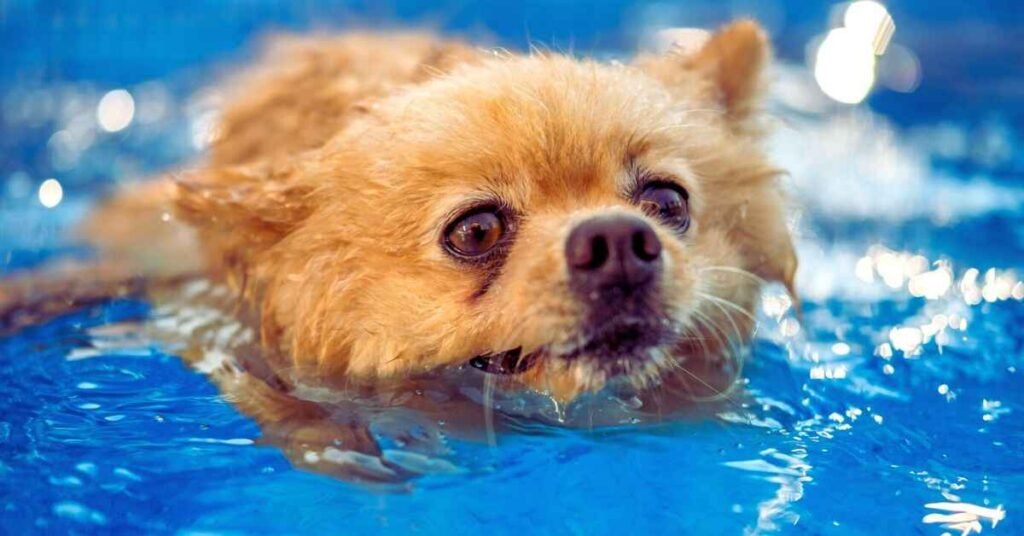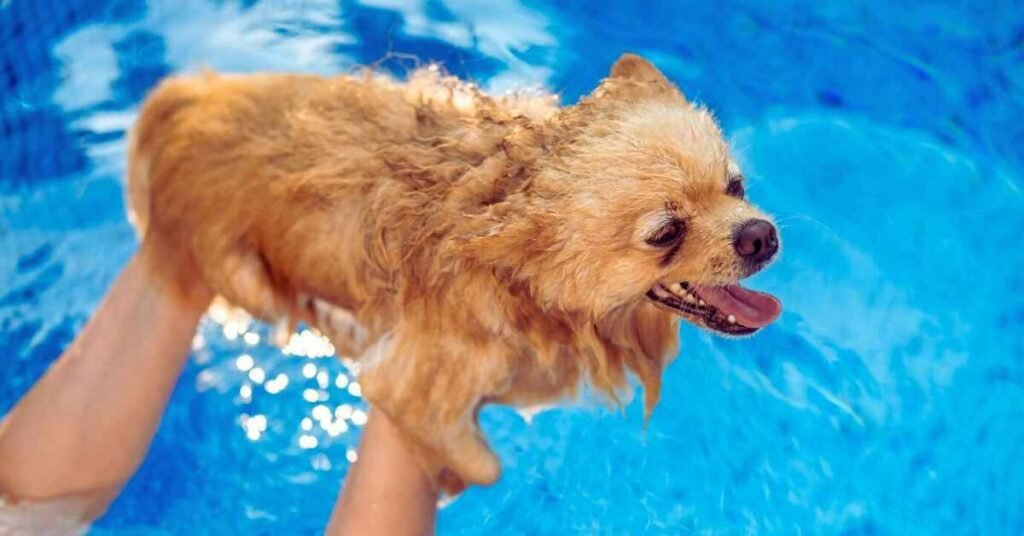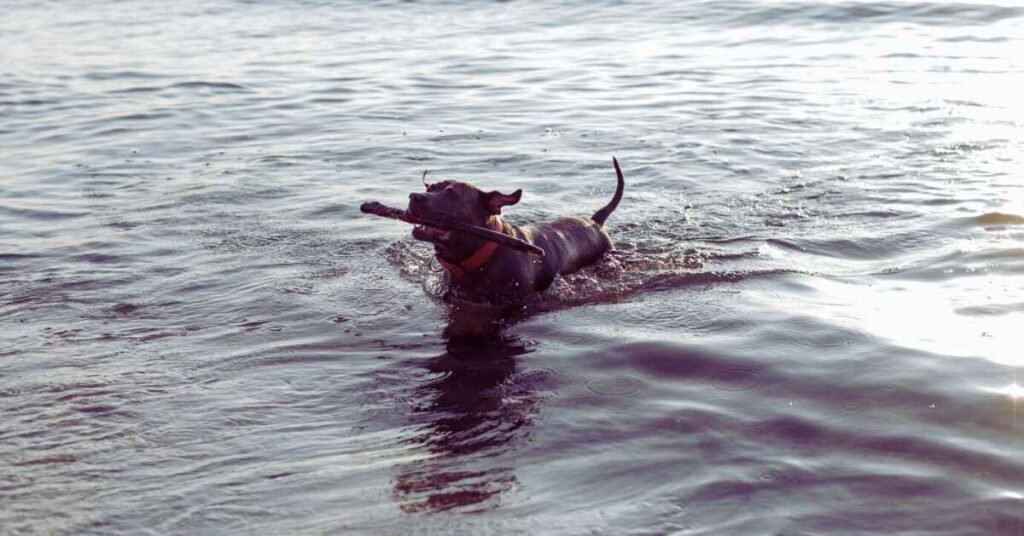Introduction
Swimming is a great way for dogs to get exercise and have fun. Just like humans, dogs need to learn how to swim safely and confidently. Teaching your dog to swim can be a good experience for both you and your dog. With patience and practice your dog can learn to love the water. Some dogs take to swimming naturally, while others may need more time and encouragement. with the right approach, your dog can become a strong and happy swimmer.
Swimming is a low-impact activity that is easy on your dog’s joints, making it perfect for dogs of all ages and sizes. It is also a great way to help your dog relax and reduce stress. In this guide, we will show you how to teach your dog to swim, from introducing them to the water to advanced swimming techniques. We will also cover safety precautions, common challenges, and fun activities to try with your swimming dog.
Table of Contents
Preparing Your Dog for Swimming
Before taking your dog swimming, it’s important to prepare them for the water. Start by getting your dog used to the sight and sound of water.
You can do this by simply sitting with them near a pool or beach.Let them play around and get used to it with their own speed.
Once they seem okay with the water, it’s time to get their paws wet. Start with small steps, like dipping their paws in the water or playing with a wet ball.
Make it fun and rewarding with treats and praise. Gradually increase their exposure to water, but always keep them safe and comfortable.
Make sure they can enter and exit the water easily. If your dog seems anxious or scared, slow down and give them more time. It’s also important to trim their nails and clean their ears before dog swimming.

Teaching Your Dog to Enter the Water
Teaching your dog to enter the water can be a fun and exciting step. Start by leading them to the water’s edge and encouraging them to take a small step forward.
Reward them with some sweets and verbal support when they are done. If they hesitate, don’t push them – let them come to you.
Once they take that first step, celebrate and reward them with a treat. Gradually encourage them to take more steps into the water, always keeping it fun and positive.
If they start to get uncomfortable, slow down and give them a break. Remember to support their back end as they enter the water, especially if they’re small or nervous.This will help them feel more secure and confident in solving problems according to the program.
Basic Swimming Techniques for Dogs
1. Body Position
The first step in teaching your dog to swim is to help them get into the right body position. This means they need to be horizontal in the water, with their head above water and their tail relaxed. You can help your dog get into this position by supporting their back end and gently guiding them into the water.
2. Paddling
Once your dog is in the right body position, it’s time to teach them how to paddle. Paddling is the movement of their front and back legs in a swimming motion. Start by holding your dog in the water and moving their legs in a paddling motion. As they get the hang of it, gradually let go and let them paddle on their own.
3. Breathing
Breathing is an important part of swimming for dogs. They need to be able to take a breath and then put their head back in the water to continue swimming. To teach your dog to breathe while swimming, start by holding them in the water and helping them take a breath. Then, gently guide their head back into the water and encourage them to paddle and breathe again.
4. Kicking
Kicking is the movement of your dog’s back legs in a swimming motion. To teach your dog to kick, start by holding them in the water and moving their back legs in a kicking motion. As they get the hang of it, gradually let go and let them kick on their own.
5. Putting it all Together
Once your dog has mastered the basic dog swimming techniques of body position, paddling, breathing, and kicking, it’s time to put it all together. Start by having them swim short distances, then gradually increase the distance as they become more confident and strong.

Advanced Swimming Techniques for Dogs
1. Diving
Diving is a fun and exciting technique that involves jumping into the water from a height. To teach your dog to dive, start by having them jump off a low platform or step into the water. Gradually increase the height as they become more comfortable.
2. Retrieving
Retrieving involves swimming out to retrieve a toy or object and bringing it back to you. This technique is great for building endurance and strengthening your dog’s swimming muscles. Start by throwing a toy into the water and encouraging your dog to retrieve it.
3. Treading Water
Treading water involves staying afloat in the water without moving forward or backward. This technique is great for building strength and endurance. To teach your dog to tread water, start by having them swim in place while you hold them in the water.
4. Swimming Underwater
Swimming underwater involves swimming beneath the surface of the water. This technique is great for building confidence and strengthening your dog’s swimming muscles. Start by having your dog swim short distances underwater, then gradually increase the distance as they become more comfortable.
5. Turning and Changing Direction
Turning and changing direction involves swimming in different directions and making turns in the water. This technique is great for building agility and coordination. Start by having your dog swim in a straight line, then gradually introduce turns and changes in direction.
Tips and Reminders
- Always start with short sessions and gradually increase the time as your dog becomes more comfortable with the new techniques.
- Use positive reinforcement and plenty of praise to encourage your dog to keep trying.
- Make sure your dog is comfortable and confident in the water before moving on to more advanced techniques
- Always prioritize your dog’s safety and well-being, and never force them to do something that makes them uncomfortable.

Safety Precautions for Swimming with Your Dog
Supervise, Supervise, Supervise: Always keep a close eye on your dog when they’re in or near the water.
Choose a Safe Location: Select a swimming area with calm waters and a gradual incline, making it easy for your dog to enter and exit the water.
Use a Life Jacket: Just like humans, dogs can benefit from wearing a life jacket in the water, especially if they’re not strong swimmers or are swimming in deep water.
Watch for Fatigue: Dogs can get tired quickly in the water, so monitor your dog’s energy levels and take regular breaks to prevent exhaustion.
Be Aware of Water Conditions: Check the water temperature and quality before swimming with your dog. Avoid swimming in water that’s too cold, too hot, or contaminated with harmful substances.
Prevent Ear Infections: After swimming, dry your dog’s ears thoroughly to prevent bacterial growth and ear infections.
Trim Those Nails: Keep your dog’s nails trimmed to prevent scratching or injury to themselves or others.
Swim with a Buddy: Swimming with a buddy, either human or canine, can provide extra support and help in case of an emergency.
Know Your Dog’s Limits: Be aware of your dog’s swimming abilities and limitations.
Health Benefits of Swimming for Dogs
Swimming is a great exercise for dogs! It helps them stay healthy and strong. Swimming works out their whole body, including their legs, tail, and ears.
It is especially good for dogs with joint problems or arthritis because water is gentle on their joints. Swimming also helps dogs lose weight and build muscle.
It is a great way to improve their heart health and reduce stress. Swimming can even help dogs with anxiety or fear issues feel more calm and confident.
It is a fun way to challenge their minds and bodies. Swimming can also help prevent health problems like hip dysplasia and obesity. It’s a low-impact exercise, so it’s easy on their bones and muscles.
Conclusion
Teaching your dog to swim is a rewarding experience for both you and your furry friend. With patience, practice, and positive reinforcement, your dog can learn to love the water. Remember to start slow, be safe, and make it fun. Swimming is a great way to improve your dog’s physical and mental health, and it’s a wonderful way to spend quality time together. Don’t be afraid to try new things and challenge your dog in new ways. With time and effort, your dog will become a confident and strong swimmer. So why not give it a try? Grab a ball, head to the pool, and get ready for a splashing good time with your dog.
Also Must Read More: Can Any Dog Swim? A Beginner’s Guide







